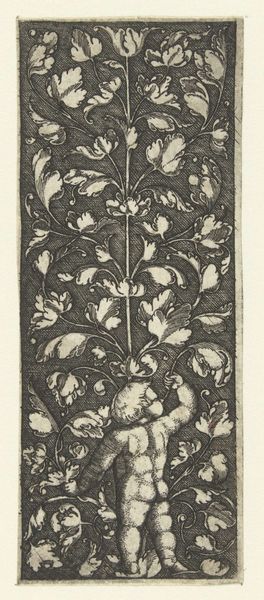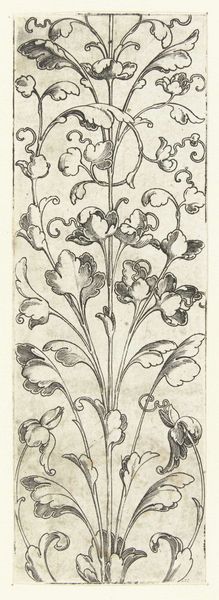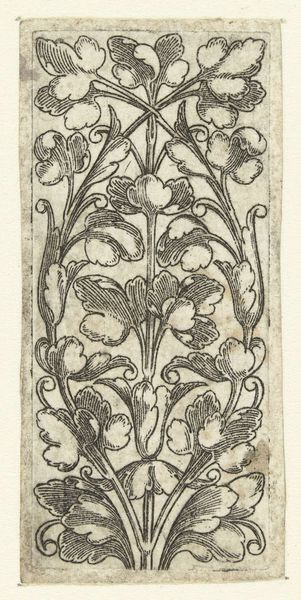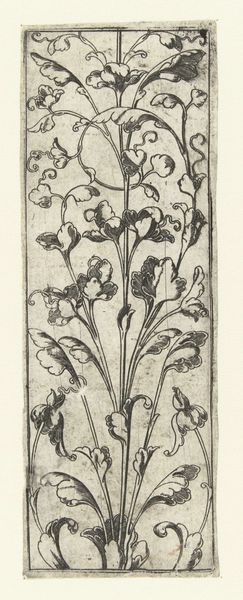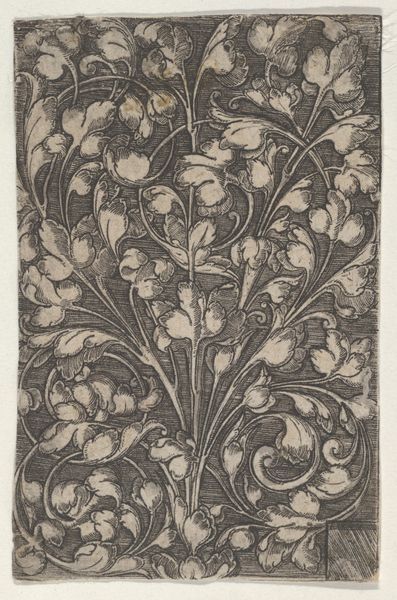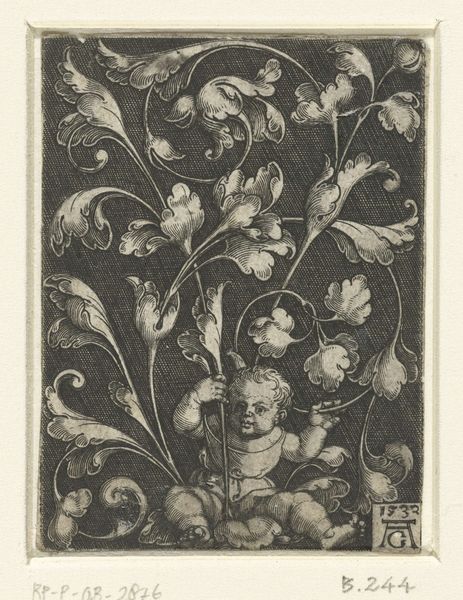
drawing, print, woodcut
#
drawing
#
organic
#
medieval
# print
#
old engraving style
#
woodcut effect
#
linocut print
#
organic pattern
#
woodcut
Dimensions: height 19 mm, width 118 mm
Copyright: Rijks Museum: Open Domain
Curator: Here we have an anonymous work, "Bladranken, ontspruitend vanuit een blad in het midden" which roughly translates to "Leaf tendrils, sprouting from a leaf in the middle." Created sometime between 1500 and 1600, it’s a print, likely a woodcut, reflecting art from the late medieval period. Editor: The first impression is one of stylized organic life striving upwards. There is an echoing symmetry throughout that hints at a very cultivated understanding of nature, but restrained. It seems quite contained, visually. Curator: Consider the period in which this piece was created, as the Reformation was starting to have enormous ramifications, we can examine the restriction of self expression that came out of the time. Editor: You know, that resonates. I immediately think about illuminated manuscripts and the symbolic use of plants in Christian iconography. Vines, for instance, often symbolize Christ, or the faithful. Does the medium of the woodcut change the symbol? Curator: Woodcuts, because of their reproducibility, were critical to spreading ideas and information across different social classes at this point in time, not all religious! Given the growing literacy amongst merchant and craft guilds, perhaps the pattern was intended as more generally decorative. Editor: Perhaps, or maybe it offered a visual grounding to the tumultuous shifts happening then. The consistent forms certainly evoke that grounded quality. But doesn’t this orderly pattern—something made to be repeated—also echo the rigid societal hierarchies of the time? Think of guilds or even the feudal system’s deep investment in order. Curator: Precisely! That order becomes not merely decorative, but socially meaningful. It can serve as a quiet commentary on structure, on growth, on power, all intertwined within the frame. Editor: It’s interesting how something so simple, a botanical pattern, can open up questions about faith, society, and personal expression. Thank you, as always! Curator: Thank you, too! Considering context really does change the conversation we have with artworks!
Comments
No comments
Be the first to comment and join the conversation on the ultimate creative platform.

